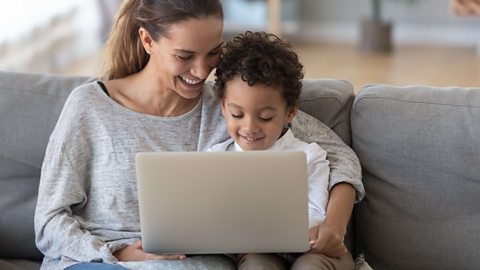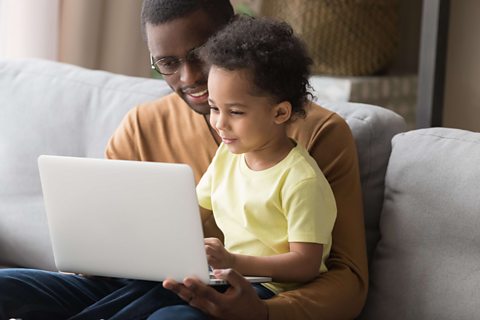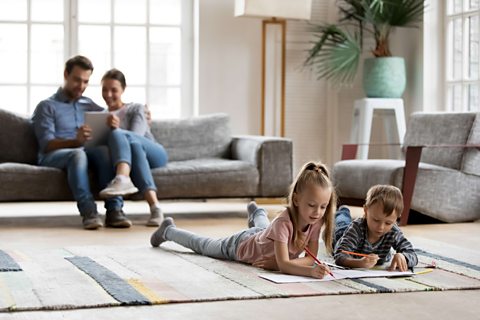
The internet can be a fantastic tool and has the power to help children develop and grow into independent learners.
However, with all of its exciting and expanding potential, there are undoubtedly risks to young users and itÔÇÖs natural to have reservations as a parent.
Luckily, there are plenty of strategies and simple techniques you can use to support your childÔÇÖs online learning journey and foster a healthy relationship with the digital world.
We spoke to the Online Safety Director for the South West Grid for Learning, Ken Cornish to find out some of his top tips for parents.


1. Use parental controls ÔÇô but donÔÇÖt rely on them
Most modern devices and internet providers come with software and privacy settings designed to filter content and keep your child safe.
TheyÔÇÖre really useful features that have become increasingly effective and sophisticated; most apps for children come with custom privacy settings, ÔÇÿreport and blockÔÇÖ features and vetting processes designed to protect their young users.
These controls are crucial but try not to become complacent; they arenÔÇÖt foolproof and can sometimes falter, especially if you forget to update your browsers or apps - as many of often do!
As your children grow up and become more tech savvy, theyÔÇÖll also soon become naturally curious and discover ways to work around them. Parental controls are often the first port of call for internet safety but controls alone donÔÇÖt necessarily shape a healthy relationship with technology.

2. Explore together
ItÔÇÖs easy to sit back and let your child use devices independently but remember phones and tablets are just tools so itÔÇÖs up to you to show your child how to use them and get the best out of the resources they find.
Ken is a big advocate of physically monitoring a childÔÇÖs use. ÔÇ£Sit with them and ask questions about what theyÔÇÖre doing; can I have a go? Show me how this works?ÔÇØ
Use it as an opportunity to communicate and learn together. This strengthens your bond together, and also starts to develop your child's critical thinking skills and curiosity about online content.
Communicating and exploring together helps your child develop a healthy relationship with technology thatÔÇÖs founded on social connection rather than isolation. WeÔÇÖre social creatures, after all, and the digital world is just an extension of our human need to build bonds and connect!

3. Talk with your child
ItÔÇÖs important to develop a safe space to talk and share. If your child tells you theyÔÇÖve seen something inappropriate or upsetting, try not to panic.
Talk to them about it in a calm and non-judgmental way, and make it clear that theyÔÇÖre safe and have done the right thing in coming to talk to you.
Young children are deeply impressionable and intuitive. Be aware of how you talk about technology when youÔÇÖre around them too. Try not to make phones or tablets objects of fear.
Ken reminds us that ÔÇ£everything should be phrased in a positive way.ÔÇØ Encourage them instead to ÔÇÿfind websites with content you enjoy!ÔÇÖ Positive language empowers.

4. You can learn about the risks
Understanding the risks and dangers of the digital world is an important step in taking control as a parent. As Ken explains, ÔÇ£ThereÔÇÖs often a misconception when it comes to technology that your children know more than you, but donÔÇÖt be fooled because thatÔÇÖs usually not the case.ÔÇØ
You know a lot more than you think and, whilst you might not be as familiar with new apps or programmes, theyÔÇÖre still curious children trying to exert their independence.
Ken says, ÔÇ£The things theyÔÇÖre mostly exposed to are low level cumulative risks.ÔÇØ This could be feeling left out of friendship groups or receiving hurtful comments from classmates online on social media. ÔÇ£ThatÔÇÖs not to say that big risks donÔÇÖt exist but itÔÇÖs often the small things that make a big impact.ÔÇØ
There are plenty of blogs and parent forums with helpful tips and information. Schools and teachers can offer advice too.

5. Lead by example
Check your own relationship with technology. WhatÔÇÖs your screen time like? Are there screens in the bedroom? Do you take regular breaks?
Ken says ÔÇ£Whatever you ask your child to do, you have to do it too. This can often trigger a few uncomfortable home truths but donÔÇÖt be too hard on yourself.
These devices are created to be addictive so youÔÇÖre battling upstream against highly advanced algorithms and systems.ÔÇØ You wonÔÇÖt be perfect, but developing lasting healthy habits at home starts with you.

6. DonÔÇÖt forget to have fun!
Between parental controls and managing screen time, it can be easy to forget how useful technology is. For all the potential dangers out there, there are also dozens of age-appropriate activities, games and resources at your fingertips.
Managing the digital world can feel overwhelming but the chances are youÔÇÖre doing a lot of these things already. Manage your own relationship with technology and often the rest will follow.
Play Bud's Number Garden game. game
Practise recognising numbers, counting, ordering and sequencing numbers

More on Parent support - English
Find out more by working through a topic